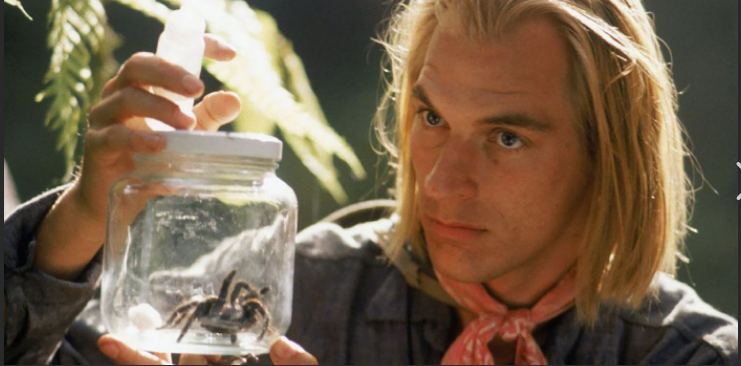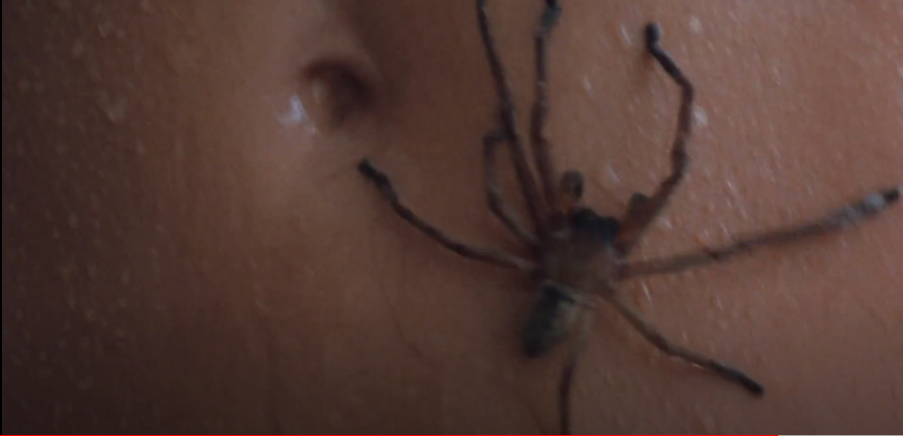In one of the most suspenseful scenes in Arachnophobia, a young woman goes for a shower in the bathroom but is ambushed by one of the spider offspring in a tense cat-and-mouse sequence. Intended as an obvious play on the shower trope in horror films – where a conventionally attractive woman is stalked and attacked by an assailant – Marshall subverts the trope here by making the assailant a small creature. The ambiguity of the film about whether or not the spider is venomous is especially interesting, as the audience’s fear originates less out of danger and more from physical disgust and repulsion at the creature. As such, the film can be seen as an example of Linda Williams’ body genre (1991), relying on an audience’s arachnophobic perception of spiders as disgusting, fearsome and repulsive to provoke a bodily reaction from viewers.
The scene immediately jumps into action with a moving shot of the silhouetted spider crawling up the shower curtain. This shot is underscored with unsettling and unnerving extradiegetic music to alert the audience that something bad is going to happen, and the shot holds once the spider reaches the railing to focus on the blissfully unaware young woman in the background. This high-angled view, with the camera positioned claustrophobically to look down on the woman from above, is visually reminiscent of an undetected predator stalking and closing in on its prey. Marshall’s use of sharp-angled medium and close-up shots highlight the claustrophobic tightness of the mise-en-scene, and the repeated jump cuts between the young woman (the prey) and the spider (the predator) as it advances closer heightens the suspense and fear of the sequence.
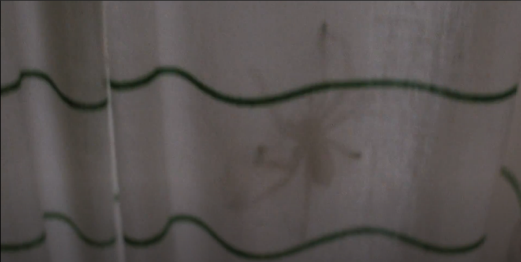
Much like the decision to not fully reveal the appearance of the parent spider until the end of the film, the initial concealing of the spider here adds to the suspense and fear of the scene, showing its body as visually distorted.
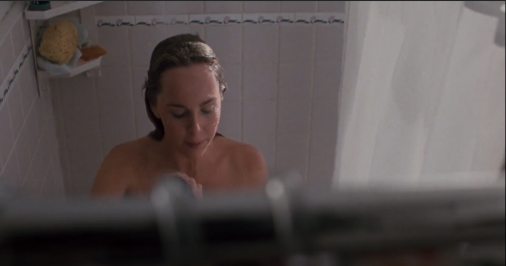
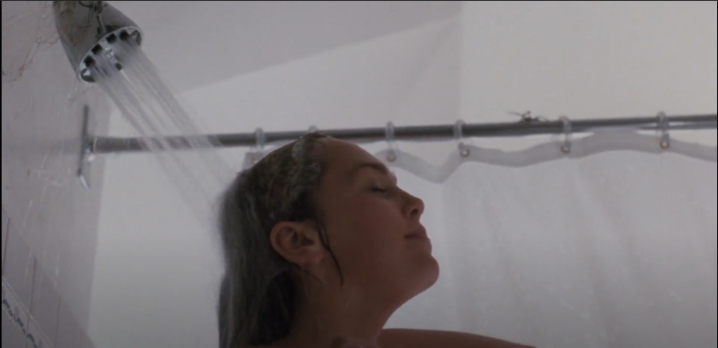
The stark whiteness of the bathroom, with white walls, a silver showerhead and rail and a white shower curtain, heighten the visual contrast against the black, dark spider.
Marshall continues to synch the camera with the movements of the spider, this time with a tilted close-up of the spider crawling across the shower railing. The synchronisation of the camera with the spider not only establishes its immediate physical threat, but also establishes the wider subverted power relations between animals and humans in the film. Unlike at the start of the film where the Venezuelan spider was presented through an exclusively human gaze, with the spider shot as an object of disgust and scientific curiosity through a rigid and still camera frame, it is the human woman here that is shown through the gaze of the threatening animal. The subversion of human-animal relations is especially notable as the film moves away from the objectification and ‘human gaze’ of the camera to the objectification of the woman and the sexualised male gaze on her body.
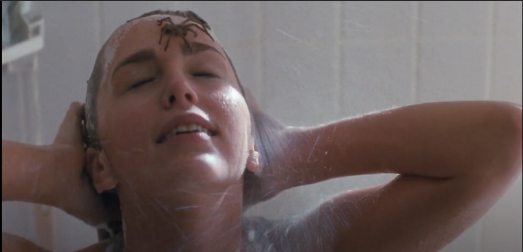
The scene reaches its suspenseful climax when, after remaining still on the shower railing in a moment of anticipation, the spider launches itself onto the woman’s face, crawling over it before being washed down her body. The deliberate decision by Marshall to cast a conventionally attractive actress is particularly interesting in regard to body genre here, with the high-angled shot of the spider on her face and the long close-up shot of it on her body inciting particular disgust and shock from the audience. Much like the dark spider is juxtaposed with the pristine whiteness of the bathroom, the soft beauty of the woman’s features is juxtaposed with its grotesque form.
Furthermore, the casting of an attractive actress and the intimate focus on her body veers into the erotica sensation of the body genre, with the audience’s disgust of the spider on her body uniquely conflicting with the sexualised camera framing on her intimate body. The film deliberately and expertly blurs the boundaries between a scene of erotica – a young woman naked in the shower – and a scene of horror, as the spider infiltrates a private space of both intimacy but also, in this case, physical vulnerability.
